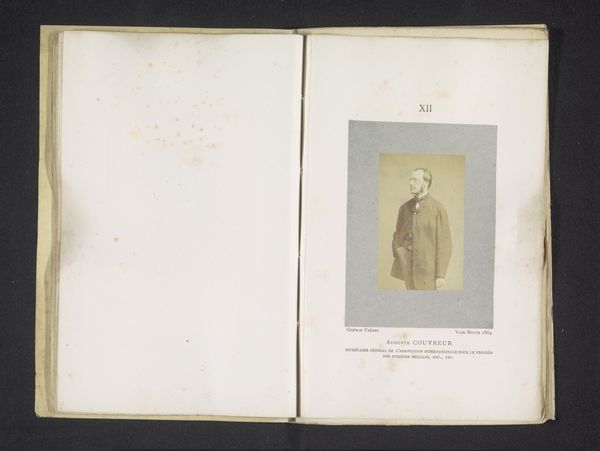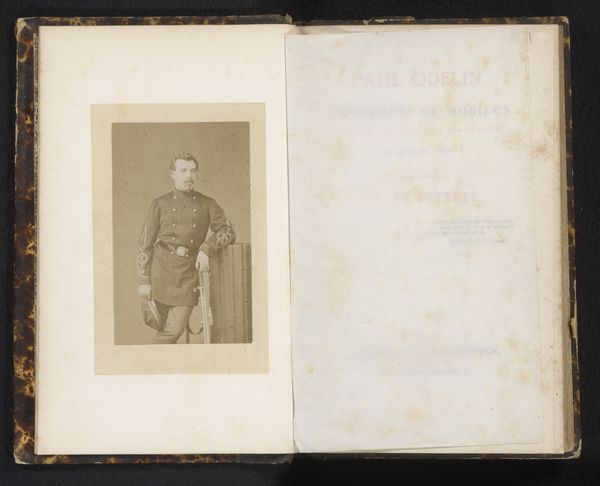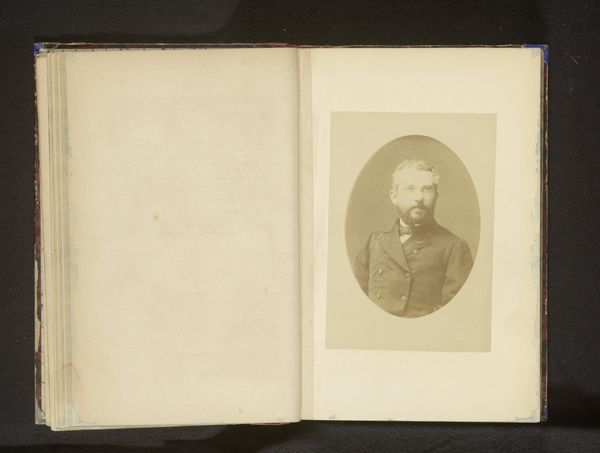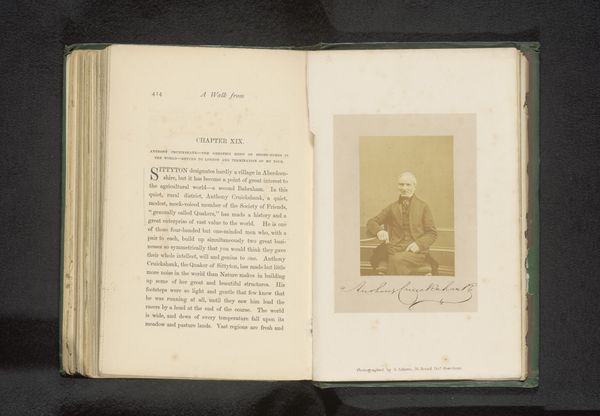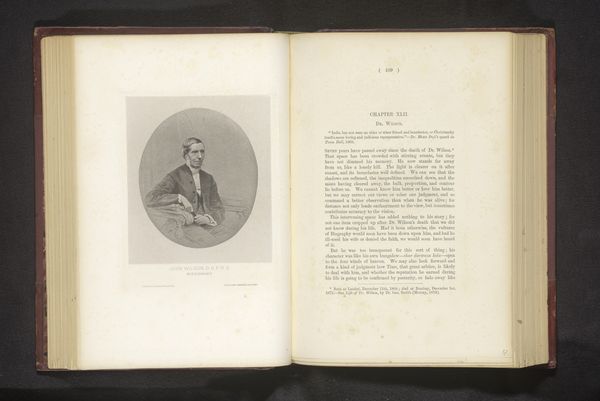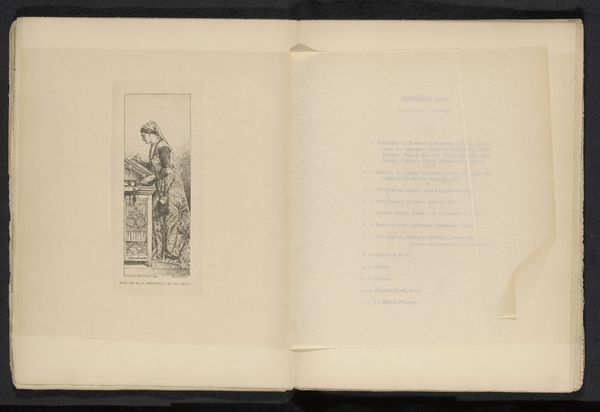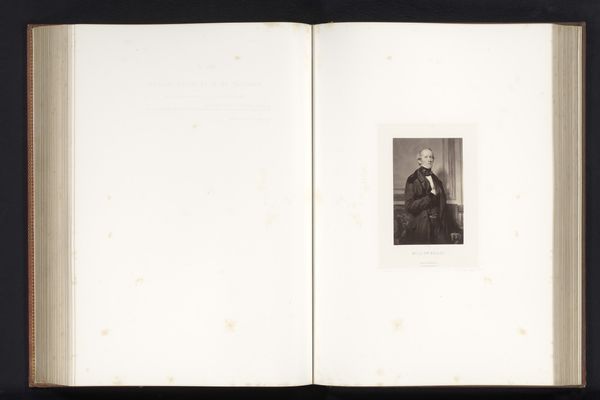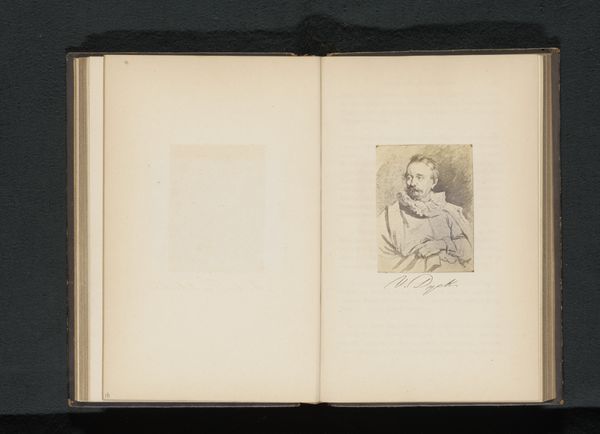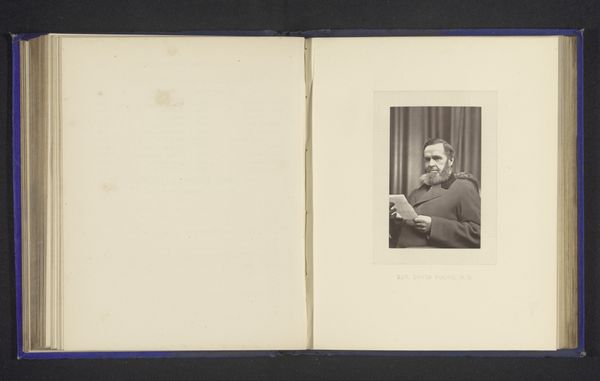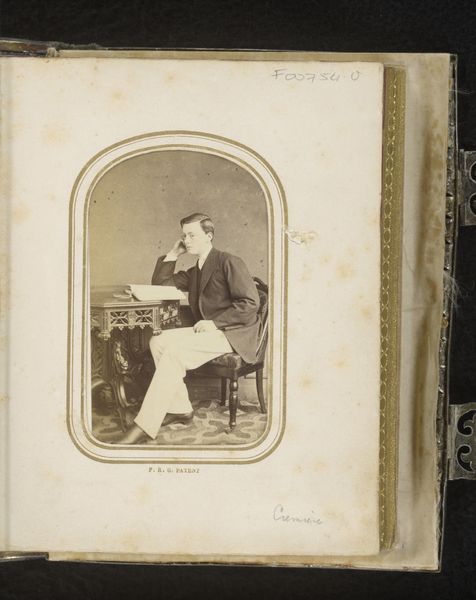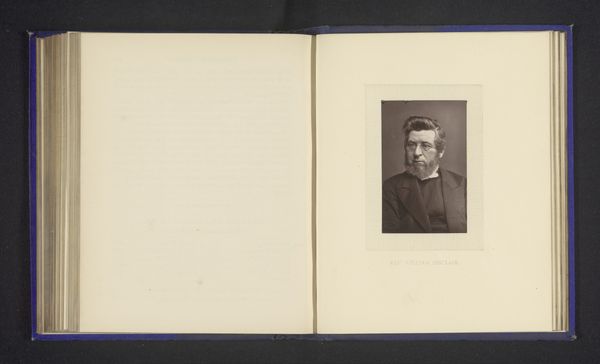
photography, albumen-print
#
portrait
#
self-portrait
#
photography
#
albumen-print
Dimensions: height 146 mm, width 102 mm
Copyright: Rijks Museum: Open Domain
Curator: Here we have a look at "Portret van Luis Niesten," a photographic work dating back to around 1882. The portrait is mounted in what appears to be a bound album. Editor: It strikes me as incredibly delicate, almost ghostly, with the sepia tones of the albumen print. It invites a feeling of intimacy. But I wonder, why place a photograph in an album? What context does the album offer? Curator: Well, photograph albums were immensely popular in the late 19th century. They served as curated displays of one’s social circle, family history, travel memories... Photography, with its indexical link to reality, offered a new way to visualize social standing and historical narrative. The politics of who gets included, and how they’re represented, within such albums is crucial. Editor: Right. I am wondering, from a maker's perspective, how the artist mediated this creation using the available tools, this photographic and binding technology available to the sitter as object of his own creation. How much involvement did Niesten have in creating this particular portrait and presentation within this album, which by nature, creates a distinction between object and representation, manual construction, and industrialized image making? Curator: Albumen prints were also highly labor intensive, relying on a complex chemical process using egg whites. This highlights a curious tension—a mechanical medium employing considerable human labour. And, yes, one could easily argue that this placement in the album elevates the photograph from mere image to treasured keepsake and documented legacy. Editor: Precisely! The photographic medium is inseparable from its socioeconomic moment. It's a constructed, and painstakingly realized, object reflecting the sitter’s self-image and place within a visual and economic system. I can appreciate that in our modern era of infinitely reproducible digital media that a print such as this carries with it a different connotation to creation, process and representation. Curator: Thinking about its social context has shifted my understanding, and highlights a narrative that could so easily be lost if focusing merely on the image itself. Editor: And by considering its tangible construction, its materials, its transformation into an object with perceived social function, we uncover the rich details of not just what this artwork means, but what it embodies.
Comments
No comments
Be the first to comment and join the conversation on the ultimate creative platform.
